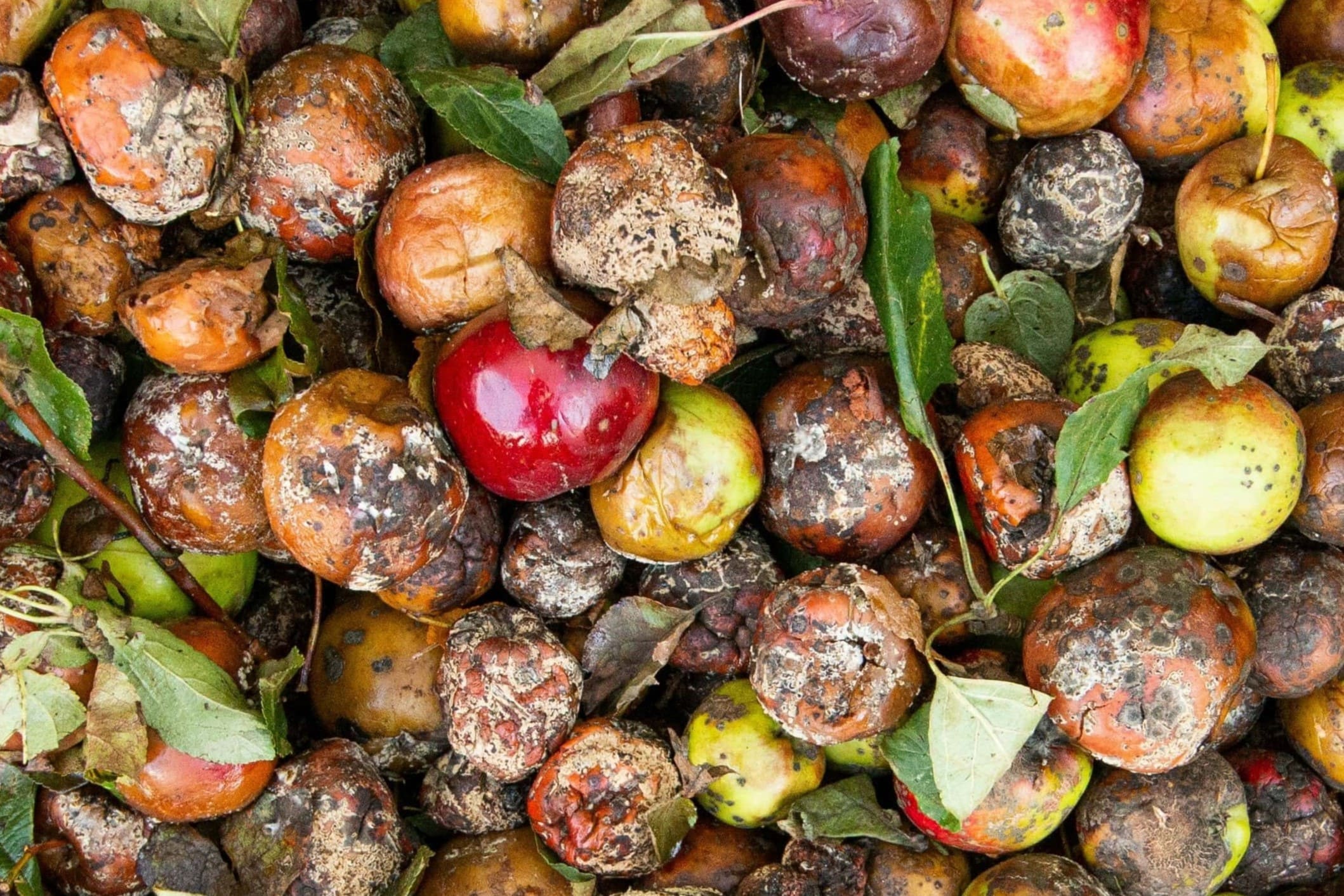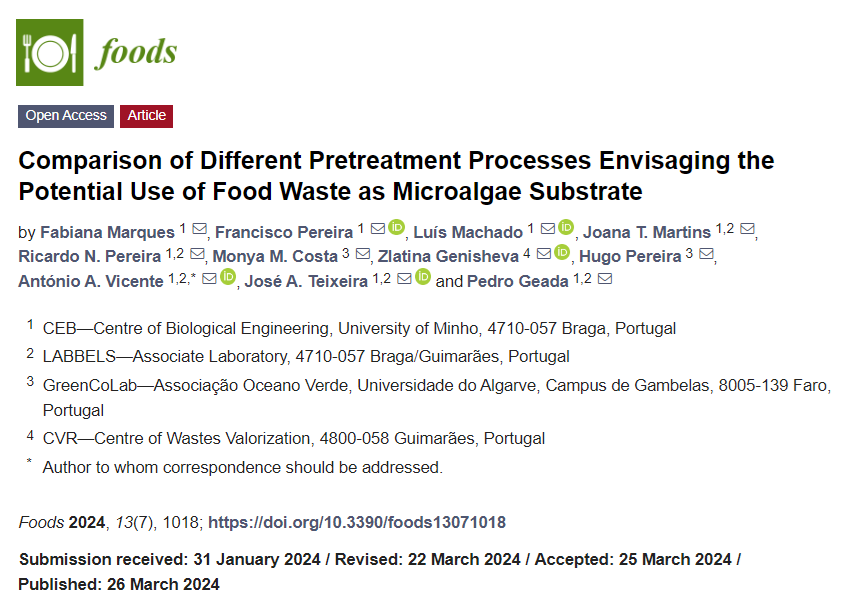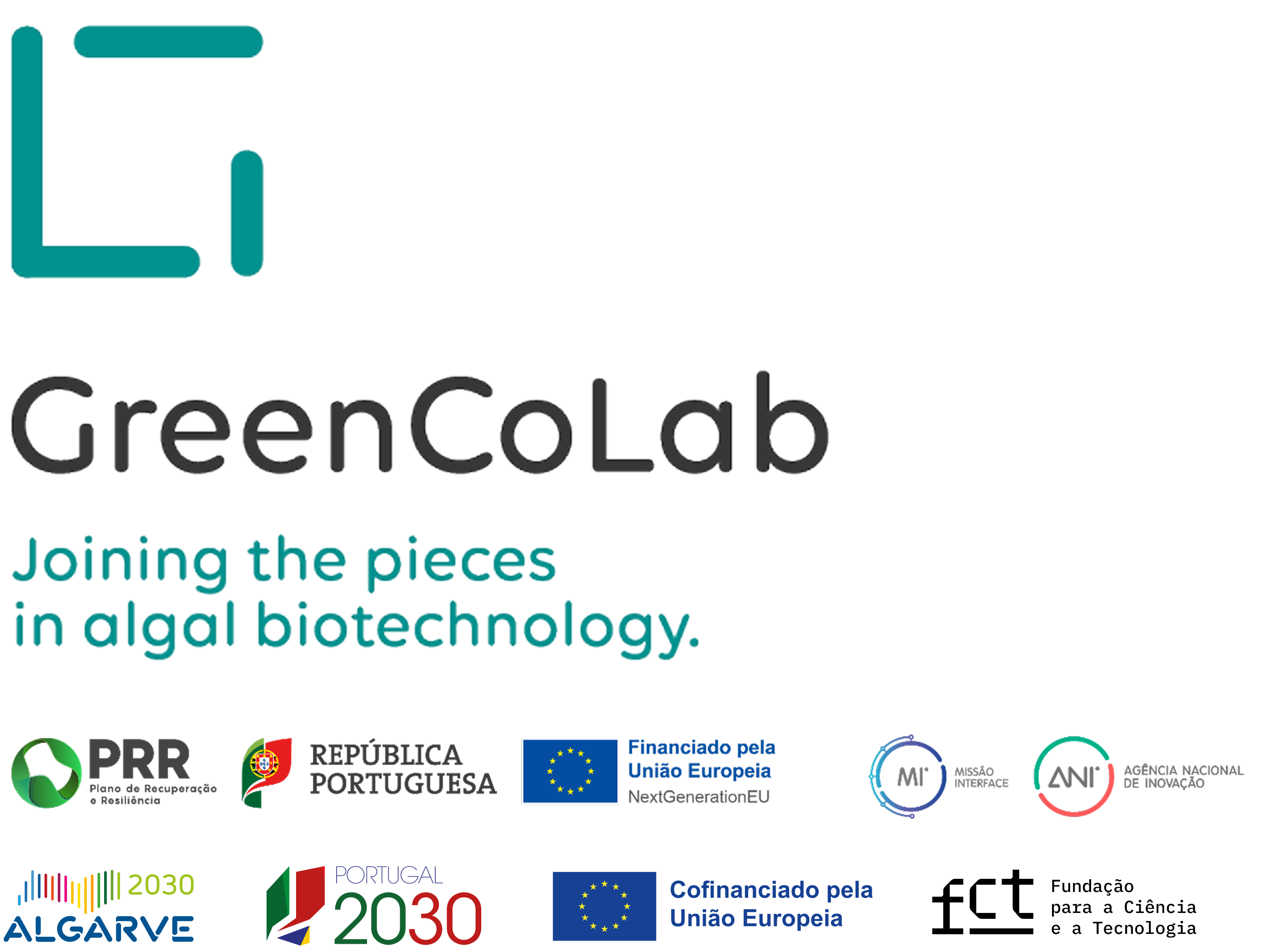

TITLE
Comparison of Different Pretreatment Processes Envisaging the Potential use of Food Waste as Microalgae Substrate
JOURNAL
Foods
AUTHORS
Fabiana Marques, Francisco pereira, Luís Machado, Joana T. Martins, Ricardo N. Pereira, Monya M. Costa, Zlatina Genisheva, Hugo Pereira, António A. Vicente, José A. Teixeira and Pedro Geada
ABSTRACT
A significant fraction of the food produced worldwide is currently lost or wasted throughout the supply chain, squandering natural and economic resources. Food waste valorization will be an important necessity in the coming years. This work investigates the ability of food waste to serve as a viable nutritional substrate for the heterotrophic growth of Chlorella vulgaris. The impact of different pretreatments on the elemental composition and microbial contamination of seven retail food waste mixtures was evaluated. Among the pretreatment methods applied to the food waste formulations, autoclaving was able to eliminate all microbial contamination and increase the availability of reducing sugars by 30%. Ohmic heating was also able to eliminate most of the contaminations in the food wastes in shorter time periods than autoclave. However, it has reduced the availability of reducing sugars, making it less preferable for microalgae heterotrophic cultivation. The direct utilization of food waste containing essential nutrients from fruits, vegetables, dairy and bakery products, and meat on the heterotrophic growth of microalgae allowed a biomass concentration of 2.2 × 108 cells·mL−1, being the culture able to consume more than 42% of the reducing sugars present in the substrate, thus demonstrating the economic and environmental potential of these wastes.



